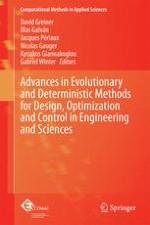This book contains state-of-the-art contributions in the field of evolutionary and deterministic methods for design, optimization and control in engineering and sciences.
Specialists have written each of the 34 chapters as extended versions of selected papers presented at the International Conference on Evolutionary and Deterministic Methods for Design, Optimization and Control with Applications to Industrial and Societal Problems (EUROGEN 2013). The conference was one of the Thematic Conferences of the European Community on Computational Methods in Applied Sciences (ECCOMAS).
Topics treated in the various chapters are classified in the following sections: theoretical and numerical methods and tools for optimization (theoretical methods and tools; numerical methods and tools) and engineering design and societal applications (turbo machinery; structures, materials and civil engineering; aeronautics and astronautics; societal applications; electrical and electronics applications), focused particularly on intelligent systems for multidisciplinary design optimization (mdo) problems based on multi-hybridized software, adjoint-based and one-shot methods, uncertainty quantification and optimization, multidisciplinary design optimization, applications of game theory to industrial optimization problems, applications in structural and civil engineering optimum design and surrogate models based optimization methods in aerodynamic design.
